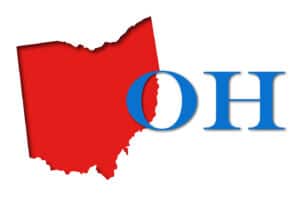NOTE: The following article is reprinted with permission and will appear in the May 2014 issue of Tax Credit Advisor.
More than 120 enthusiastic energy- and cost-concerned representatives from a variety of affordable housing companies and organizations filled a conference room in a building adjacent to Philadelphia’s 30th Street Station on April 3 for a frank and incisive, daylong look at the true financial benefits that can be reaped from best practices in energy and water efficiency.
NH&RA’s inaugural Preservation Through Energy Efficiency Road Show dug deeply into case studies from presenters who have already benefited from creative approaches to utility cost control, sources of available funding for retrofits and the huge possibilities for a more efficient future even in what Michael Bodaken of the D.C.-based National Housing Trust referred to as a “resource-flat environment.”
“This is the only time I’ve seen a really frank discussion of these issues, said Jason Jannati, co-founder of greeNEWit, an energy retrofit consulting firm in Columbia, Md. “You guys did a great job of bringing everybody whose anybody in this area together.”
NH&RA Executive Director Thom Amdur introduced the program by asking, “How can we make our transactions better?” He answered his own question, “By creating more predictability in our utility expenses. Not only is this doable, it’s also financeable.”
Amdur then set the goal for the day: each attendee being able to “take home some piece of tangible knowledge you can apply to your portfolio or use in your next deal.”
Speaking for U.S. Department of Housing and Urban Development Secretary Shaun Donovan, Jane Vincent of HUD’s Philadelphia office characterized the energy efficiency effort as one that could benefit “people, pocketbook and planet,” making it a “Win-Win-Win” situation.
Variety of Sessions
The tightly-packed program kicked off in the morning with a session devoted to “Putting It All in Context: What You Spend, What You Get,” in which case studies by representatives of Winn Development, Boston, Mass.; ACTION-Housing, Pittsburgh, Pa.; and the National Housing Trust, Washington, D.C. presented their recent experiences.
Another panel, “Learning Local Programs & Resources: Utility Programs and Other Local Partnerships,” highlighted local support from regional utilities including Philadelphia Gas Works, PSE&G and PECO.
Perhaps the most provocative session focused on “Financing Options,” including energy efficiency funding sources and strategies. Panelists explored the pros and cons of various funding models as well as a variety of sources such as community development financial institutions (CDFIs), which serve underfunded areas and populations; “green banks”; state housing finance agencies; energy efficiency and preservation block grants (EECGBs) made by the federal government to states; utility companies’ own local programs; state energy programs; commercial lenders; and energy services companies (ESCOs) set up to finance energy efficiency in certain areas.
As Ravi Malhotra of the TBL Fund in Denver put it, “Either you’re going to continue paying to your utility or you’re going to invest in your building. Take your pick.”
Afternoon sessions were devoted to “Water Management”; “Operations, Maintenance and Resident Engagement”; “Making Data Driven Decisions”; and “Right-Sizing Your Utility Allowance.” Discussion of regulatory developments at HUD also featured prominently.
Constant Flow of Ideas
The entire day yielded a constant flow of progressive ideas that stimulated and excited the audience. Among the most interesting and eye-opening takeaways from the sessions were:
- Utility company spending on energy efficiency, at about $7 billion today, is expected to double over the next 10 years;
- Working with local utility companies can well be your best resource;
- Private sector partners are supporting innovation and making up for the lack of funding available from government in a deficit obsessed environment;
- Between grants, loans and savings, some properties that pursue extensive retrofits are paying for their changes in just over a year and substantially increasing cash flow annually thereafter;
- Progressive utility companies such as PSE&G, which presented at this event, are investing new capital to remove barriers to retrofitting;
- “Patient capital” is an ally. In a property owner’s evaluation of risk, liability and security, the term of the loan may well be more significant than the interest rate;
- Retrofits that control water usage, together with educating residents about the benefits, are huge opportunities for energy efficiency and reduced expense; and,
- Effectively engaging and changing resident behavior often necessitates a change in corporate culture. The first step towards creating a culture of sustainability at your properties is for your staff – from the executive suite down to the on-site maintenance work – to embrace efficiency.
The high level of involvement and conversation spilled out into the hallways during breaks and inspired attendees to seek out partners for future projects.
The final session, “Tying It All Together,” again hosted by Thom Amdur, summarized the key points of the day and looked to “Next Steps and Future Opportunities.” This was followed by a networking reception that afforded attendees the opportunity to get to know each other and form mutually beneficial relationships.
Typical of the reaction to the conference was this comment from Evan Williams of Prudential Affordable Housing Finance in New York: “I came to this conference because I am always asking, how can we be smart lenders and use the tools that are out there to provide success to our borrowers. We are only now in the preliminary stages of explaining what we can do in the green spaces, and there is a lot of education to be done.”
The national conversation on lowering costs and improving your bottom line by paying attention to energy opportunities continues in Denver, Colo. On July 14 at the PPA Event Center, then travels to Minneapolis and Atlanta on dates to be announced in the fall.
In the interim, conversation and information will take place on NH&RA’s PTEE Knowledge Exchange, a platform on the Association’s Web site, housingonline.com. It features a searchable and sortable library of resources, including case studies, white papers and program summaries.
NH&RA, established in 1971, is a professional association of like-minded, successful and quality-driven individuals who are involved in affordable housing, historic rehabilitation and new markets tax credit development.
The Preservation Through Energy Efficiency project is supported with a grant from the John D. and Catherine T. MacArthur Foundation. The Philadelphia Road show was co-sponsored by the Pennsylvania Housing Finance Agency. The Denver Road Show is co-sponsored by the Colorado Housing Finance Agency.



